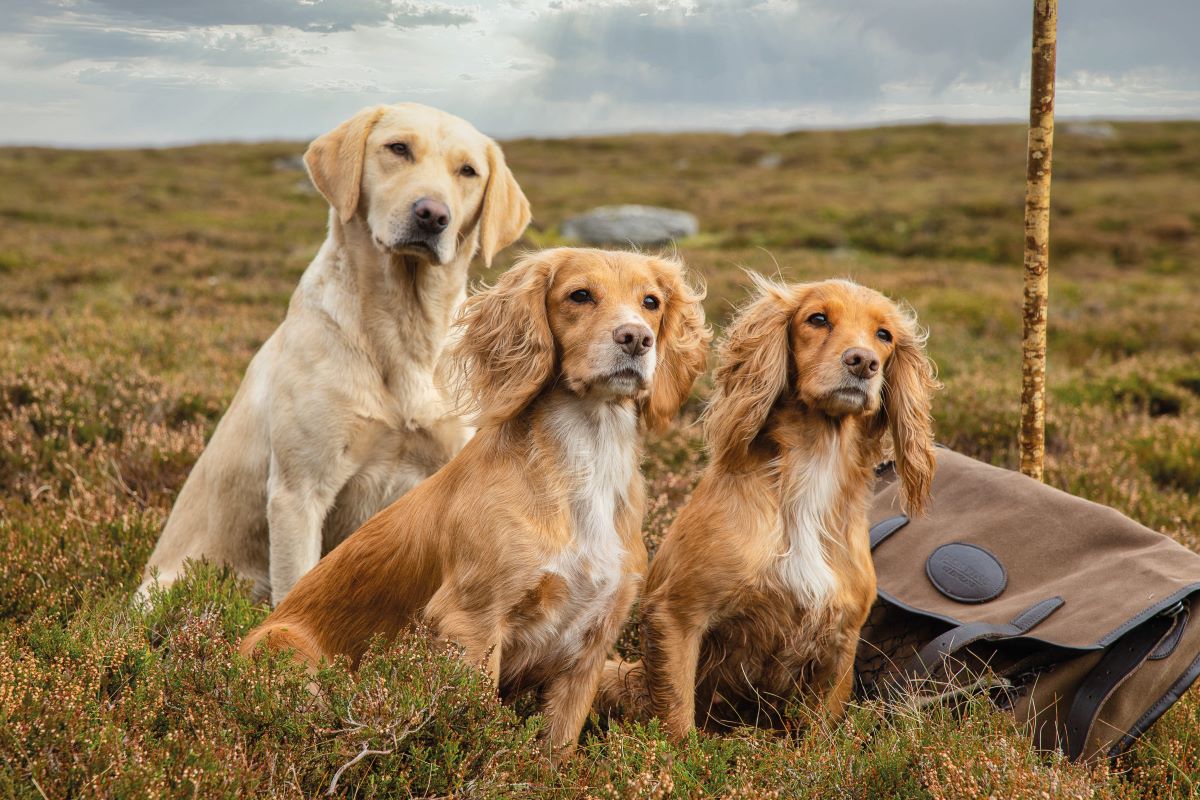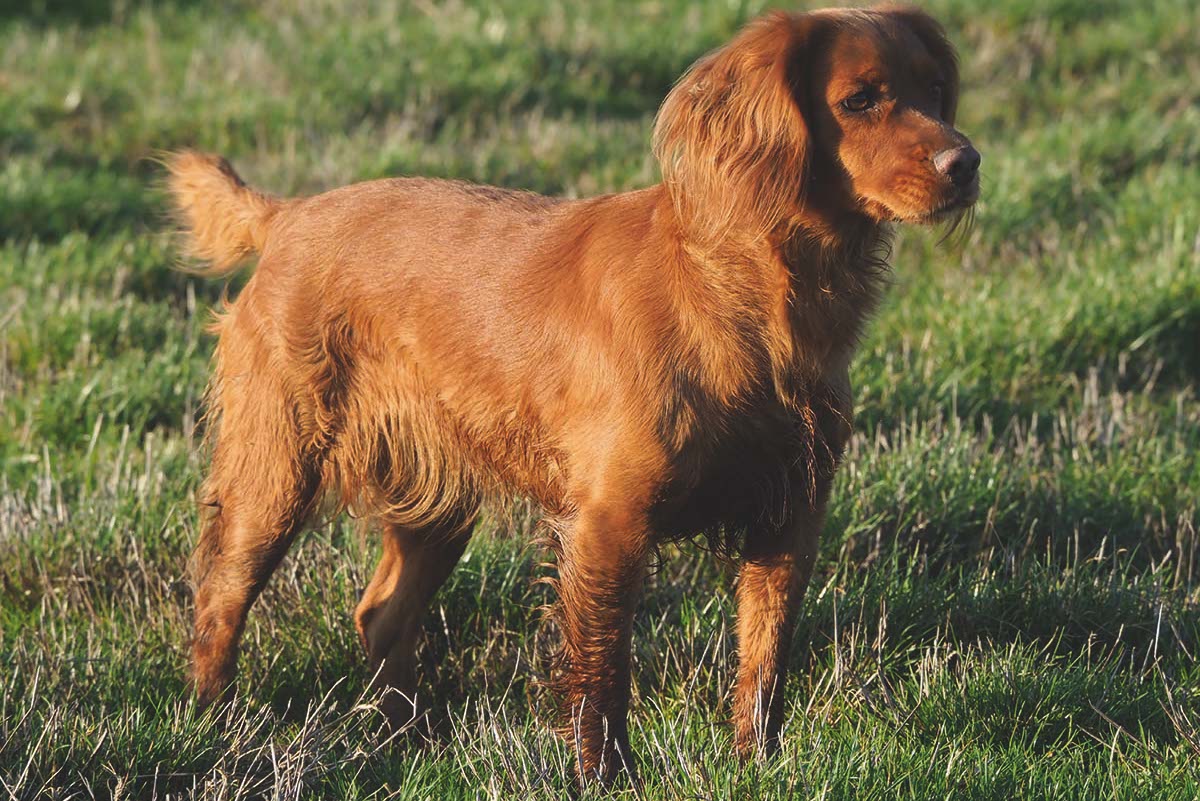Italian gundogs – what are their strengths in the field?
A trio of gundog breeds from Italy have found a place in the hearts of UK owners. David Tomlinson assesses their strengths in the field
I’ve written recently about both French and German gundogs.
On the same theme, this is a piece about Italian gundogs, but it wasn’t one I was planning to write. However, a friend with a passion for all things Italian — from formaggi to Ferrari and ciabatta to chianti — challenged me to write it. Intriguingly, though he shoots with a Beretta and drives an Alfa Romeo, he works a pair of black Labradors, having never quite taken the plunge to get an Italian gundog.
My hesitancy in writing this piece is because, unlike France and Germany, I’ve never been shooting in Italy, though I have been lucky enough to have travelled widely in the country from top — Gran Paradiso in the Italian Alps — to toe (Sicily). I have a good idea of the terrain that the native Italian gundogs have to work in, while I’m also well aware that game is generally scarce, the two main factors that have shaped and moulded Italy’s shooting dogs.

Bracco Italiano
Italian gundogs
During my last Italian trip, to Sicily, I tried to see rock partridges, a cousin of our familiar redlegs. I failed, but perhaps I might have succeeded if I’d had a spinone or bracco working for me. Of all the gundogs, none is more hound-like in appearance than the bracco Italiano. While the historians may differ on the breed’s ancestry, most agree that the bracco is one of the oldest breeds in Europe, with bloodlines that go back to the Renaissance (15th and 16th centuries).
There is little doubt that there is hound blood coursing through the bracco’s veins, while the short coat and colours of orange and white, orange roan, chestnut and white, and chestnut roan are quite unlike any other gundog breed.
Breed historians believe that the bracco has its origins in the Egyptian hound and the Persian mastiff, while the white and orange is thought to come from the Piedmont pointer, and the white and chestnut from the Lombardy pointer. The breed’s doleful expression suggests a touch of St Hubert hound, the ancestor of the modern bloodhound.
Hound blood was generally introduced to add stamina to a breed and to improve scenting powers. It certainly worked with the bracco, for it has a fine reputation for its ability to track and find game. A muscular, powerful dog, measuring up to 67cm at the withers, the bracco Italiano is one of the biggest of all the gundogs. Despite their size, the dogs I have seen working have been impressively athletic, covering rough ground seemingly effortlessly.
The first bracco was imported into Britain as recently as 1989. Annual UK registrations reached 165 in 2018, a number exceeding many more familiar gundogs, from Brittany to Irish water spaniel. My guess is that only a few go shooting. If you work one, I’d love to hear from you.

The Italian spinone is not a fast or flashy dog
Some years ago, I upset spinone enthusiasts by suggesting that these hairy Italians aren’t exciting gundogs to watch. I still stand by that, but it doesn’t mean that I underestimate the spinone as a shooting dog. I have seen some excellent examples. However, spinoni aren’t fast, flashy dogs. They have been bred to pace themselves, covering ground with their unique trotting gait, something that they can keep up all day.
They are, arguably, the ultimate gundog for shoots where game is scarce. A ‘spin’ will hunt consistently all day, seeking out elusive pheasants or rabbits. When game is found, expect a staunch point followed, hopefully, by a sound retrieve.
Grouse
The first spinone reached Britain 40 years ago and, thanks to the enthusiasm of a few individuals, soon became established here as a working gundog. Today, the Italian Spinone Club of Great Britain holds (pandemics permitting) working tests and grouse pointing tests, providing plenty of support for owners who want to work their dogs.
Spinoni have a reputation as first-class falconry dogs and I had been hoping to go hawking with a spinone this past season until bird flu stopped my plans.
The spinone is a big dog, as tall and heavy as a bracco, while visually it is only likely to be confused with a Korthals griffon or a German wirehaired pointer. All three share similar ancestry. In contrast, the third Italian gundog established here, the lagotto Romagnolo, is a very different sort of animal. For a start it is a lot smaller, weighing no more than 16kg and only 48cm at the shoulder, while it is more likely to be confused with a cockerpoo than anything else.
There’s a good reason for the lagotto’s small size. It originates from the Po delta, where it was bred as a duck dog. Shooting in the delta is from punts, where small dogs are far more practical — less risk of capsizing.
It’s 25 years since the first lagotto was brought to the UK. Today, the breed is well established and strongly supported by a lively breed club. After some confusion, the Kennel Club classified the breed as a spaniel in 2014. The lagotto has a well-earned reputation as an all-rounder — excellent swimmer, talented at agility and brilliant at truffle hunting. If I was looking for a gundog with a difference, the lagotto would be high on my list.








